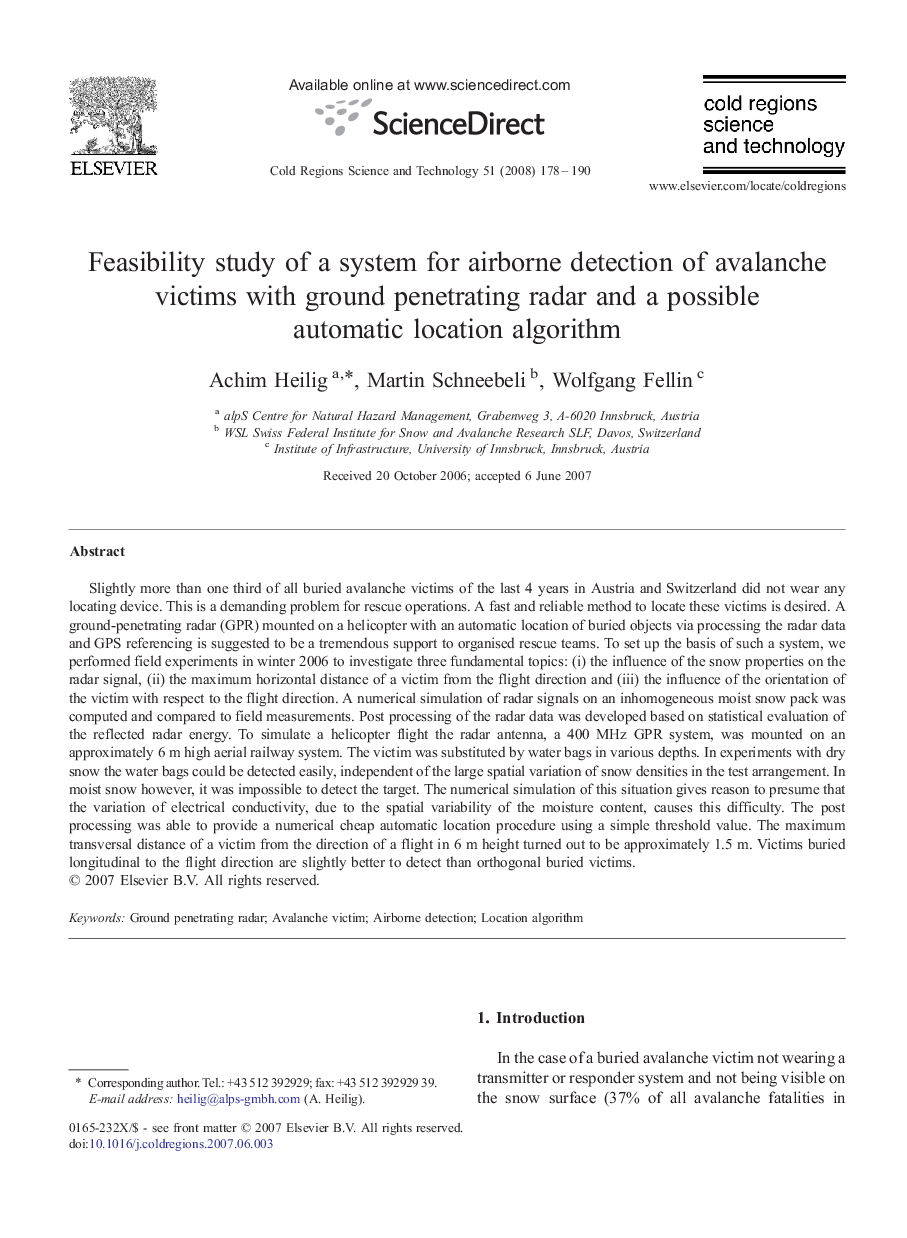| کد مقاله | کد نشریه | سال انتشار | مقاله انگلیسی | نسخه تمام متن |
|---|---|---|---|---|
| 4676570 | 1634500 | 2008 | 13 صفحه PDF | دانلود رایگان |

Slightly more than one third of all buried avalanche victims of the last 4 years in Austria and Switzerland did not wear any locating device. This is a demanding problem for rescue operations. A fast and reliable method to locate these victims is desired. A ground-penetrating radar (GPR) mounted on a helicopter with an automatic location of buried objects via processing the radar data and GPS referencing is suggested to be a tremendous support to organised rescue teams. To set up the basis of such a system, we performed field experiments in winter 2006 to investigate three fundamental topics: (i) the influence of the snow properties on the radar signal, (ii) the maximum horizontal distance of a victim from the flight direction and (iii) the influence of the orientation of the victim with respect to the flight direction. A numerical simulation of radar signals on an inhomogeneous moist snow pack was computed and compared to field measurements. Post processing of the radar data was developed based on statistical evaluation of the reflected radar energy. To simulate a helicopter flight the radar antenna, a 400 MHz GPR system, was mounted on an approximately 6 m high aerial railway system. The victim was substituted by water bags in various depths. In experiments with dry snow the water bags could be detected easily, independent of the large spatial variation of snow densities in the test arrangement. In moist snow however, it was impossible to detect the target. The numerical simulation of this situation gives reason to presume that the variation of electrical conductivity, due to the spatial variability of the moisture content, causes this difficulty. The post processing was able to provide a numerical cheap automatic location procedure using a simple threshold value. The maximum transversal distance of a victim from the direction of a flight in 6 m height turned out to be approximately 1.5 m. Victims buried longitudinal to the flight direction are slightly better to detect than orthogonal buried victims.
Journal: Cold Regions Science and Technology - Volume 51, Issues 2–3, February 2008, Pages 178–190